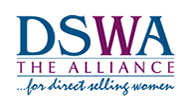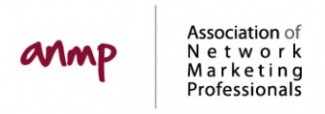| The Anti-Ambit Gambit Also, Industry Trends and How Not to Track Them Ambit Energy Hit with Billion Dollar Lawsuit Ambit Energy has been sued by two distributors for breach of contract, misrepresentation, fraud, deceptive trade practices, defamation, libel, harassment, and discrimination. Basically, the suit alleges Ambit “failed to accurately pay monthly customer residual income and weekly leadership bonuses to the Plaintiffs”, and is seeking redress of $50 million (that must have been one helluva miscalculation). The plaintiffs are seeking $1.16 billion in total compensatory and punitive damaged, including $13 million to cover “attorney’s fees” (they must have one helluva legal team). The complaint can be found here: I’m holding off on making any substantative commentary regarding the merits of the case because Ambit’s response has not yet been made public. I’ve found that no matter how solid the plaintiff’s story seems to be, the picture always changes when I’ve heard from the defense. Ambit’s attorney has asked the court for a conference before submitting a motion to dismiss, claiming the plaintiff’s complaint “fails to put forth even the most basic allegations necessary to maintain a federal suit…”, “fails to satisfy even the most liberal application of the pleading requirements…”, “fail to offer anything more than conclusory statements…”, and the allegations are “so vague” that they are asking the judge to compel the plaintiffs to submit a clearer, more substantive complaint so they know what to respond to. Ironically, the judge has responded that the pre-motion letter itself was too vague and “does not adequately set forth the factual and legal bases of defendants’ anticipated motion”. The defendants have until Monday to make a clearer case as to why the judge should make the plaintiffs present a clearer case. But here’s the “gambit” the plaintiff’s are using, which is a tactic I’ve seen employed in many legal actions by distributors against network marketing companies, that always makes me shake my head. Within their complaint they accuse Ambit Energy of violating Section 5(a) of the Federal Trade Commission Act by deceptively operating a “pyramid scheme”. This begs the question, what if the plaintiffs succeed on this charge? How will they convince a jury to award them unpaid bonuses and commissions from what they’ve just convinced them was ll-begotten gains from illegal activity? In this case the plaintiffs want another $100 million for being deceived by this “pyramid scheme”, so I suppose they can forgo the $50 million for the miscalculated checks. But I’ve seen this “illegal pyramid scheme” count in a number of wrongful termination cases where the distributor is only seeking back pay, and sometimes even reinstatement! This strategy is usually designed to leverage the company into a settlement. No network marketing company wants to defend the pyramid scheme allegation before a jury, regardless of its merits. If the general public can be so easily mislead into believing legitimate network marketing programs are illegal pyramids by a few internet bloggers and their brother-in-law who was in Amway back in 1989, imagine what a good trial lawyer can do. But then, what if the company calls their bluff and doesn’t settle? Now the plaintiff must either file an amended complaint that drops the pyramid scheme charge, or leave it in and try to convince the jury to award them the unpaid income from, and perhaps to even reinstate them in, an illegal pyramid scheme! This gambit can be an even more dangerous gamble when the plaintiff is a top leader who’s been with the company for a number of years. I recently worked on a case where, had it gone to trail (it didn’t) the distributor would have had to explain to a jury how she was completely oblivious to the illegal nature of her opportunity for eleven years, and only discovered it right after she was terminated. Industry Trends, and How Not to Track Them The Industry Trends page at MarketWaveInc.com has been updated. We’re still seeing a substantial rise in online chatter regarding the network marketing industry, both pro and con. We benefited from a 23.1% spike in pro-MLM references since last month, but also suffered a 26.6% increase in negative references. Of the top 100 Google search results for the term “MLM” 86 are now supportive, up from 82 last month. I’ve always believed in the “Wisdom of Crowds”, and that the best “trend analysts” are the thousands of investors that make up what we call “Wall Street”. These purchasers of shares of a company’s stock are, for the most part, looking for those that they believe will increase in value. That is, get bigger, better, and more profitable. These trend analysts are much more pragmatic and much less prone to personal bias than those within the network marketing industry. Like me, for example. I have a personal, professional, and financial interest in finding evidence that supports my pro-MLM agenda. I honestly don’t believe I’m deliberately rigging the data, but I certainly am no less susceptible to “unconscious researcher’s bias” than any other analyst. So, fine. Don’t take my word for it. Let’s see what those thousands of other analysts down on “the Street” think about this industry’s prospects for future growth and prosperity. In the last three months the overall stock market (based on the S&P 500 index) has risen 0.34%. The “MLM Index”, made up of the 12 largest publicly traded network marketing companies, has risen 10.97%. Over the past year these same dozen companies have beaten the overall market 27.63% to 19.53%. Apparently we “MLMers” aren’t the only ones who are optimistic about the future growth of the network marketing industry. What’s one of the worst ways to track growth trends? Web traffic! A company’s Alexa rankings seem to be the fashionable stat of choice now days when gauging who’s hot and who’s not within the network marketing industry. The assumption is, I assume, that an increase in unique visitors to a company’s corporate website, or in its monthly “reach” (percentage of all internet users who visited the site), means the company is growing, or at least that interest in the company is. Conversely, if their Alexa graphs trend downward the company must be shrinking, or interest in the company is waning. That’s certainly one possibility, but one of many. Usana Health Sciences saw a spike in web traffic back in May of 2007, not because of any sudden interest in Usana by prospects or customers but rather all the adverse, high profile publicity caused by Barry Minkow (a short seller who profited by causing Usana’s stock price to drop, and who has just been convicted of fraud for the second time). Over the second half of 2010 Yoli saw traffic to their corporate site trend downward after a significant run up the previous six months, which some competitors were quick to exploit as a sign of their pending failure. However, the reason was more to do with Yoli’s introduction of personalized marketing sites based on an entirely separate platform — traffic to which strongly trended upward during the same period. The lesson here is that a company can change the manner in which they use their online assets resulting in swings in web traffic that has little to do with the company’s popularity. Another hypothetical example would be a hot new company that has its reps access their back office via the corporate site who then introduces a new training or marketing site that includes the back office log in. Reps no longer visit the corporate site to access their back office and its Alexa rankings drop, even though the company remains popular. In March of 2010 Amway saw their web traffic almost double, an increase that was maintained until January of this year when another sustained run up of website visitors began. Is Amway suddenly getting hot again? Not really. Amway closed their online subsidiary Quixtar in March of 2010 which drove all their traffic back to Amway’s home site, and early this year Amway opened several new foreign markets and settled a $150 million civil lawsuit accusing them of being a pyramid scheme (which I believe is a record settlement for such a case) just before the new year began. Foreign expansion can be a huge contributor to Alexa traffic rankings since, for example, the traffic to Amway.ru (Russia), Amway.com.br (Brazil), Amway.co.jp (Japan), etc. are all combined. Another example is Longevity Network (which will be relaunching soon, BTW) which was foundering in the United States back in 1999 before launching South Korea, their only foreign market. They grew to over 100,000 distributors in S. Korea by 2001. Little changed in the US while their Alexa rankings skyrocketed. Due to the algorythms used by Alexa to determine their rankings the margin for error increases significantly the less trafficked the site. Alexa openly declares, “Generally, traffic rankings of 100,000 and above should be regarded as not reliable.” If you’re thinking this would only apply to small, irrelevant companies, consider this applicable list: AmeriPlan (100,340), Trump Network (109,377), Watkins (114,022), Evolv Health (117,289), LifeVantage (117,563), Stream Energy (122,066), Neways (138,146), Reliv (156,817), Youngevity (157,904), Life Plus (253,601), Life Force (255,389), Max GXL (259,543), Zrii (283,201), Mandura (379,960), Oxyfresh (418,451), Zija (464,251), Jafra Cosmetics (599,225), Qivana (627,579), Princess House (769,257), and Rain Nutrition (784,741). This is not to say that Alexa is useless in trend analysis. Not at all. I’m just saying their are myriad other factors you’d have to consider to know if the graphs related to web traffic are indicative of growth and popularity trends, and if so to what degree. One great stat that Alexa provides that is indicative of a company’s popularity, at least from the standpoint of prospect and customer interest, is the percentage of visitors to the company’s website that got there by the visitor specifically searching for it. Another is the amount of time the average user spends on the site. Just for kicks, I’ve taken the percentage of site visitors who arrived via a search engine and multiplied this by the number of minutes each visitor spends on the site (both are averages over the past 30 days). Here’s the results related to a sampling of some of the most prominent companies: Avon 0.879 Another good way to track growth and popularity trends is to record the number of new references to the company’s main home page that have been added to the internet over the previous 30 days, then compare it to the same data 30 days from now, and each month going forward. Google provides such search capabilities and I’ve logged the numbers for all the companies listed above. I’ll let you know the results in 30 days. Len Clements |
Alert #179: 6/8/2011
February 5, 2013 Leave a Comment










